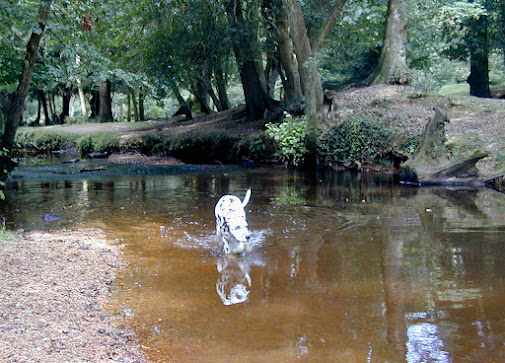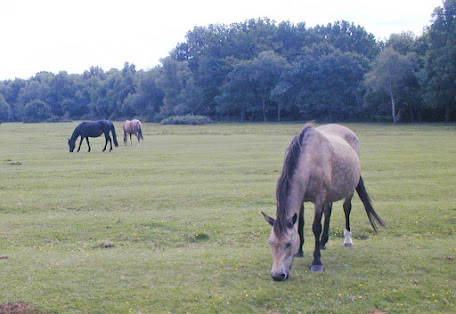Go to the
ant, thou sluggard; consider her ways, and be wise
(Proverbs
6:6)
Images courtesy of Wikimedia CommonsMost flying
ants, known as alates, are the the winged version of the common black garden
ant, Lasius niger. Sexually mature
queens and males appear on a hot day when the sun is out and people are
enjoying a barbecue, perhaps, or gardening, or walking, or simply sitting and
enjoying a fine day. The ants like hot, humid days, for the dampness in the air
keeps their wings and bodies moist. Rain and wind are their enemies, and then
they will keep close to their nests.
There is
no one ‘flying ant day’ - they can occur at any opportune time between June and
September. Already this summer in
England we have had some auspicious days for the ants. You may notice one or
two traversing your arm or leg. Brushing them off, you notice them all over the
ground, walking, not flying, quite slow-moving, quite sinister, wings
glittering unnaturally in the bright sunlight. In the woods, too, the wood ants
are out and about, intent on their flying day. Suddenly, the ants ascend into
the air and if you are unlucky enough to be caught in the swarm, your hair or
your mouth may trap a few of them.
An ant colony
has one queen served by about 5,000 workers, though some nests may have three
times that number. The queen’s purpose is to lay eggs and increase the colony. The
female workers look after the queen, the eggs and the larvae. They also enlarge
the nest and collect food.
Most of
the eggs develop into workers but once the nest has been expanded as far as
possible, which will vary according to the availability of food and nesting
materials and the proximity of other ant colonies, virgin queens and drones
will develop. On a suitably fine, warm day, the alates emerge and take flight,
looking for a mate. They scatter as they leave the nest to try and ensure that
they mate with individuals from other colonies, thus reducing the risk of inbreeding
and weakening the species. There is
safety in numbers and a large swarm limits the extent of predation by birds. Each
queen usually mates with several males.

The males
live for only a day or two after mating while the queen bites off her wings and
seeks a suitable location where she burrows underground to lay the first of her
eggs. She raises this first brood to maturity, not eating for weeks until her
workers are ready to forage for her. She will continue laying eggs for the rest
of her life, which may be as long as 15 years in the wild. Queens in captivity
have lived for 28 years. She will never emerge from the nest again.
The
Ants
What
wonder strikes the curious, while he views
The
black ant’s city, by a rotten tree,
Or
woodland bank! In ignorance we muse:
Pausing,
annoyed – we know not what we see.
Such
government and thought there seem to be;
Some
looking on, and urging some to toil,
Dragging
their loads of bent-stalks slavishly:
And
what’s more wonderful, when big loads foil
One
ant or two to carry, quickly then
A
swarm flock round to help their fellow-men.
Surely
they speak a language whisperingly,
Too
fine for us to hear; and sure their ways
Prove
they have kings and laws, and that they be
Deformed
remnants of the Fairy-days.
John
Clare (1793 – 1864)



_(14804512693).jpg)



.jpeg)

.jpg)
.jpg)

_P180_SWAN_HOPPING.jpg)
_and_cygnets.jpg)





.jpg)












